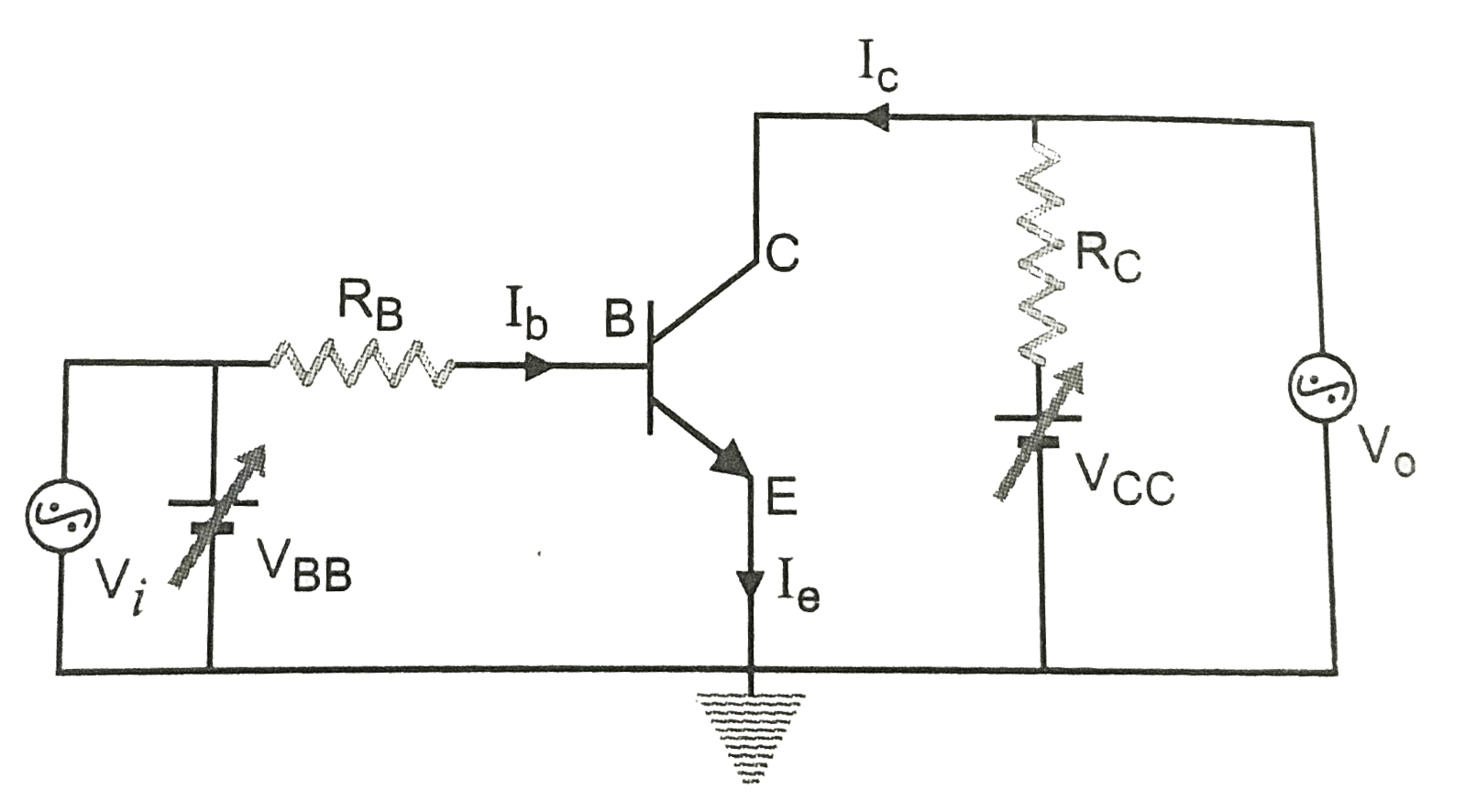For a common emitter transistor working in active state, following data is given RL=1KΩ Vin=10mV
△IB=15μA,△IC=3mA. The input resistance ri& voltage gain AV for the transitor is
200,0.67KΩ
300,0.67KΩ
200,0.1KΩ
300,1KΩ
The correct Answer is:B
To solve the problem, we will find the input resistance ri and the voltage gain AV for the common emitter transistor using the given data.
Step 1: Calculate Input Resistance ri
The formula for the input resistance ri is given by:
ri=VinΔIB
Where:
- Vin=10mV=10×10−3V
- ΔIB=15μA=15×10−6A
Substituting the values into the formula:
ri=10×10−315×10−6=1015×103Ω=23×103Ω≈0.67kΩ
Step 2: Calculate the Current Gain β
The current gain β is given by:
β=ΔICΔIB
Where:
- ΔIC=3mA=3×10−3A
Substituting the values:
β=3×10−315×10−6=315×103=15×103=200
Step 3: Calculate Voltage Gain AV
The formula for the voltage gain AV is given by:
AV=−β⋅RLri
Where:
- RL=1kΩ=1000Ω
Substituting the values:
AV=−200⋅10000.67×103
Calculating the denominator:
AV=−200000670≈−298.51
Rounding this, we find:
AV≈−300
Final Answers
- Input Resistance ri≈0.67kΩ
- Voltage Gain AV≈−300
- Vin=10mV=10×10−3V
- ΔIB=15μA=15×10−6A
- ΔIC=3mA=3×10−3A
- RL=1kΩ=1000Ω
- Voltage Gain AV≈−300
Topper's Solved these Questions
Similar Questions
In a common emitter configuration with suitable bias, it is given that RL is the load resistance and RBE is small signal dynamic resistance (input side). Then, voltage gain, current gain and power gain are given , respectively, by :
β is current gain , IB,IC and IE are respectively base, collector and emitter currents.
View SolutionFor a common emitter transistor amplifier, the audio signal voltage across the collector resistance (Rc) of 2kΩ is 2 V. If the current amplification factor (β) of the transistor is 100, calculate the input signal voltage (VBE) and base current (Ig) for base resistance of 1kΩ.
View Solution
Knowledge Check
In a transistor connected in a common emitter mode RC=4kΩ,R1=1kΩ,IC=1mA and IB=20μA. Find the voltage gain.
A100B200C300D400
In a common emitter transistor amplifier the audio signal voltage across the collector is 3V. The resistance of collector is 3kΩ. If current gain is 100 and the base resistance is 2kΩ, the voltage and power gain of the amlifier is :
View SolutionIn common emitter transistor as shown in Fig., the VBB supply can be varied from 0 V to 5.0V. The Si. Transistor has βac=250 and RB=100kΩ,Rc=1kΩ,VCC=5.0V. Assume that when the transistor is saturated, VCE=0V and VBE=0.8V. Calculate the minimum base current, for which the transistor will reach saturation. Hence, determine Vi when the transistor is 'switched on' find ranges of Vi for which the transistor is switched off and switched on.

View SolutionFor a common - emitter transistor, input current is 5μA,β=100 circuit is operated at load resistance of 10kΩ, then voltage across collector emiiter will be
View SolutionIn a common emitter transistor transistor amplifier, the audio signal voltage across the collector is 3V. The resistance of collector is 3kΩ. If current gain is 100 and the base resistance is 2kΩ, the voltage and power gain of the amplifier are
View SolutionDraw a simple circuit of a CE transistor amplifier. Explain its working. Show that the voltage gain, Av, of the amplifier is given by Av=−βacRIri, where βac is the current gain, RL is the load resistance and ri is the input resistance of the transistor. What is the significance of the negative sign in the expression of the voltage gain ?
View SolutionA common emitted amplifier circuit, built using an npn transistor, is shown in the figure. Its dc current gain is 250,RC=1Kω and VCC=10V. What is the minimum base current for VCE to reach saturation?

View SolutionA common emitted amplifier circuit, built using an npn transistor, is shown in the figure. Its dc current gain is 250,RC=1Kω and VCC=10V. What is the minimum base current for VCE to reach saturation?

View Solution
